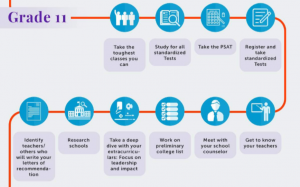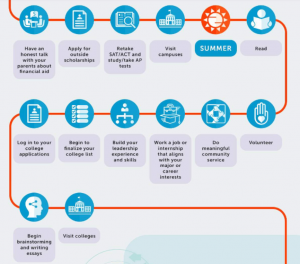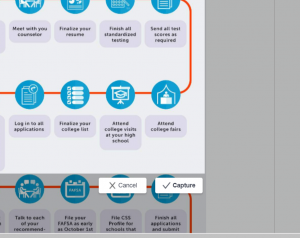STEM
A broad curriculum based on the idea of educating students in four specific disciplines — science, technology, engineering and mathematics — in an interdisciplinary and applied approach.
These programs are designed for students from K-2 to high school and has become a innovator in introducing a global educational opportunities.
CPAP (Comprehensive Preparatory Assistance Program) implements the modules in its multi-layered concept for students beginning in middle school.
Grade 9
- Take the toughest classes you can
- Meet your school counselor
- Apply for testing accommodations if you need them
- Explore and choose extra curricular activities
- Engage with your community outside of school
- Read outside of class
Summer
Volunteer, Work
Read, Travel
Visit colleges
Grade 10
- Take the toughest classes you can
- Begin preparing for the PSAT, ACT, SAT
- Find a tutor if you need one
- Meet with your school counselor
- Focus and commit to your extracurriculars
- Start your resume
- Research colleges
Summer
- Read, Travel
- Volunteer, Work
- Visit colleges
- Prepare for the SAT, ACT, PSAT, SAT Subject, and AP tests
In the final two years of your high school career, these are some rudimentary guides that can help you check off your progress. CPAP provides a full slate of help guides and tips that help you make a seamless transition. 


Grade 11
- Take the toughest classes you can
- Study for all standardized Tests
- Take the PSAT
- Register and take standardized Tests
- Get to know your teachers
- Meet with your school counselor
- Work on preliminary college list
- Take a deep dive with your extracurriculars:focus on leadership and impact
- Research schools
- Identify teachers/others who will write your letters of recommendation
- Have an honest talk with your parents about financial aid
- Apply for outside scholarships
- Retake SAT/ACT and study/ take AP tests
- Visit campuses
Summer
- Read
- Volunteer
- Do meaningful community service
- Work a job or internship that aligns with your major or career interests
- Build your leadership experience and skills
- Begin to finalize your college list
- Log in to your college applications
- Begin brainstorming and writing essays
- Visit colleges



Grade 12
Fall
- Take the toughest classes you can
- Meet with you counselor
- Finalize your resume
- Finish all standardized testing
- Send all test scores as required
- Attend college fairs
- Attend college visits at your high school
- Finalize your college list
- Log in to all applications
- Meet all high school deadlines for sending transcripts and recommendations
- Know your deadlines
- Finish all essays
- Decide about Early Decision and/or Early Action
- Talk to each of your recommender s
- File your FAFSA as early as October 1st
- File CSS profile for schools that require
- Finish all applications and submit
- Schedule interviews as required
- Apply for scholarships
- Get the best grades you have ever gotten
Winter/Spring
- Send updates to schools that deferred you
- Fight senioritis
- Send mid-year reports to schools that require them
- Make final campus visits
- Follow all directions carefully for each acceptance or waitlist you receive
- Make your decision
- Compare financial aid rewards
- Send in your deposit once you decide to accept a school’s offer
- Send update to schools that waitlist you where you are still interested in attending
- Graduate
- Pat yourself on the back
- Thank your parents, teachers, counselor, and everyone who helped you get here
HOME